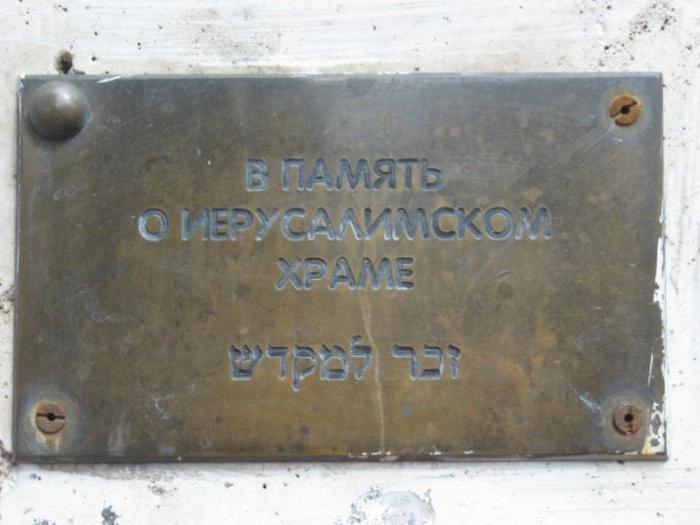The Wailing Wall is the world-famous Jewish shrine located in Jerusalem. For believers, this is a symbol of hope. Every year, a huge number of pilgrims from all over the world flock to the shrine. Not everyone knows that there is its own Wailing Wall in Moscow. This unusual memorial was built and inaugurated in the early 2000s. Where is this attraction located and is it considered a shrine?
Who built the Moscow Kotel?
In Jerusalem, the Wailing Wall is a fragment of the wall of an ancient Jewish temple, destroyed by the Romans, which has been preserved to this day. The modern monument in the capital of Russia is an ideological reduced copy of the shrine of world significance. The Wailing Wall monument in Moscow was created on the initiative of the then mayor of the city, Yuri Luzhkov. The opening of the memorial was timed to coincide with the 110th anniversary of the Choral Synagogue, celebrated in May 2001.
This monument was created as a gift to all believers attending the synagogue. The memorial is especially relevant for Jews who dream of visiting the Wailing Wall in Jerusalem and do not have such an opportunity. The Moscow copy is a reminder of the original shrine, as well as a symbol of faith. The opening of the monument was greeted by believers with glee. This is a clear sign of attention of the authorities to the followers of Judaism and their problems.
Description and photo of the Kotel

The original Wailing Wall extends 57 meters, its height is 19 meters. The Moscow copy has more modest dimensions. Namely: 15 meters in length and 3 meters in height. The Wailing Wall in Moscow was built from rough stone mined in the suburbs. It is worth noting that visually the metropolitan "new building" really bears a resemblance to the original. Rough masonry, poorly crafted blocks - these features make the Wailing Wall recognizable. There is a tablet on the monument, the inscription on which reads: "In memory of the Jerusalem Temple." Officially, the Moscow copy of the “shrine” has the status of a memorial. But, despite this fact, the monument is very popular among believers. The followers of Judaism believe that if you put a note with a prayer or desire in the crack of the Western Wall in Jerusalem, the text of the message will certainly reach the Almighty. A similar tradition has taken root in Moscow. Numerous pieces of paper can be seen in the cracks of the monument.
Wailing Wall Monument in Moscow: how to get there by public or private transport
The exact coordinates of the memorial: 55 ° 45'21 "N; 37 ° 38'7" E. The Wailing Wall is located near the choral synagogue. Her address: Moscow, Bolshoi Spasoglinischevsky Lane, building 10. The nearest metro station is Kitay Gorod, and you can walk from it in a few minutes. You need to go to Solyansky passage, then turn left onto Bolshaya Spasoglinischevsky Lane. After about 150 meters, you will reach the desired attraction. The Kotel in Moscow is visible from afar. This monument stands out against the backdrop of the city landscape. Familiar to all residents of the area. If you ask about how to get to it, they will probably tell you the right way.
Muscovites and city guests reviews on the sights
The Wailing Wall monument in Moscow often provokes mixed emotions from observers. Not all residents and guests of the capital have the opportunity at the first desire to go to Jerusalem and visit the ancient shrine. Accordingly, the installation in Moscow of its copy can be considered a positive development. Each resident of the city or a tourist can come to the Moscow monument.
Many believers like this memorial. They perceive it as a manifestation of respect for religious traditions and customs. It is no coincidence that the tradition arose of leaving notes in the crevices of masonry. Among the authors of the letters are many sincerely faithful people praying for the fulfillment of their cherished desires. The opportunity to visit the Kotel in Moscow gives them hope and optimism.
Among Muscovites there are those who do not like this monument. In their reviews, some residents of the capital say that a reduced copy of the world shrine is a real mockery of the feelings of believers. The Moscow Kotel is much smaller than the original and devoid of any sacred meaning.
Any opinion has a place to be, to visit or not to visit the monument is everyone’s personal business. Now you know where the Kotel is located in Moscow, and if you wish, you can easily find it and see it with your own eyes.